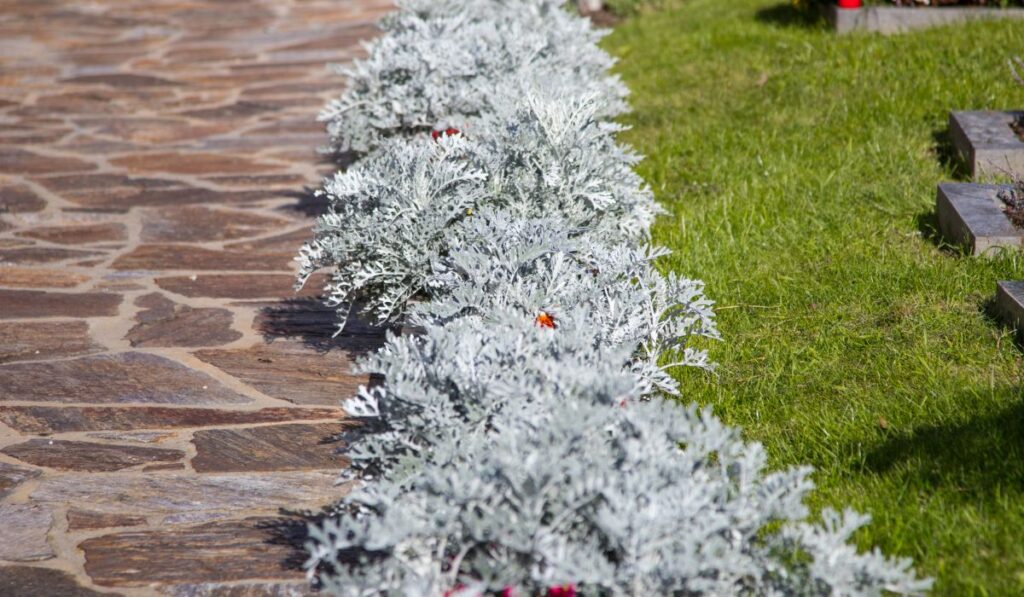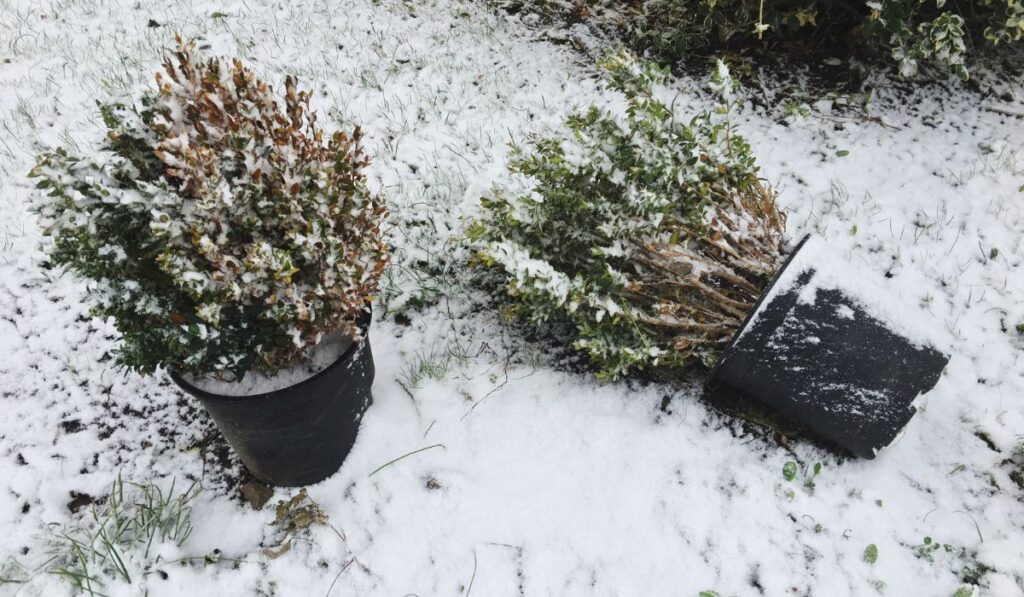Archive for Landscape Design
The Benefits of Professional Landscaping on Property Value in California
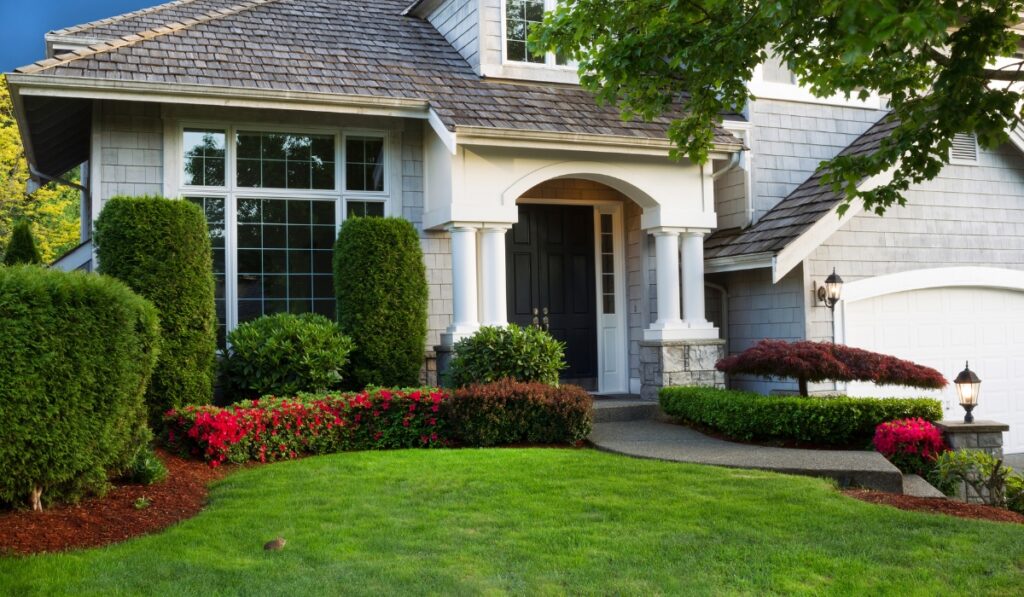
In California, where the climate and outdoor lifestyle play a significant role in everyday life, the appeal of a well-maintained landscape cannot be overstated. Whether you’re in bustling cities like Los Angeles, charming coastal towns, or the serene suburbs of Rohnert Park, professional landscaping offers more than just aesthetic enhancement. It significantly boosts property value and has a profound impact on curb appeal. Here’s a deeper look at how professional landscaping can be a wise investment for California homeowners.
Enhanced Curb Appeal
First impressions are crucial, and the exterior of your home is the first thing potential buyers see. A professionally landscaped property with lush greenery, balanced designs, and vibrant colors instantly boosts curb appeal, making your home stand out in the market. Well-chosen plants and hardscape elements that complement the architectural style of your home can create a compelling first impression that increases overall marketability.
Increased Property Value
Studies have shown that professional landscaping can increase a property’s value by up to 15%. In California’s competitive real estate market, this can translate to a significant return on investment. The aesthetic and functional improvements made through landscaping not only add immediate value but also contribute to long-term property appreciation.
Cost-Effective Renovations
Compared to other home renovations like kitchen remodels or adding a swimming pool, landscaping is a cost-effective way to enhance property value. The modifications can be as simple as adding flower beds, installing a new lawn, or as elaborate as creating outdoor living spaces with kitchens and fire pits. Each project can be tailored to fit a variety of budgets and still yield high returns.
Reduced Time on Market
A well-landscaped property not only attracts more buyers but can also lead to a quicker sale. Homes with mature gardens and thoughtful layouts tend to sell faster than their barren counterparts. This is particularly important in markets where the speed of sale can be as critical as the sale price.
Improved Energy Efficiency
Professional landscaping can also improve the energy efficiency of your home. Proper placement of trees and shrubs can provide shade during the hot California summers, reducing the need for air conditioning. Additionally, greenery can act as a windbreak and insulate the home during cooler months, reducing heating costs.
Eco-Friendly Benefits
In a state that values sustainability, professional landscaping using native plants and eco-friendly practices can also appeal to environmentally conscious buyers. Techniques such as xeriscaping, efficient irrigation systems, and the use of mulch contribute to a landscape that requires less water and maintenance, which is particularly appealing in drought-prone areas like California.
Aesthetic and Functional Harmony
A professional landscaper can strategically design your outdoor space to balance aesthetics with functionality. This means creating spaces that are not only beautiful but also usable, such as outdoor seating areas, vegetable gardens, and pathways that enhance the living experience and appeal to a broader range of buyers.
Partner with DK Landscaping
At DK Landscaping, we understand the unique climatic and cultural nuances of landscaping in California. We are committed to transforming your outdoor spaces in ways that not only reflect your personal style but also maximize your property’s value and appeal. Contact us today to learn how our expert services can enhance your property in Rohnert Park and beyond, setting the stage for a rewarding and profitable sale.
Choosing the Best Evergreens for Your Landscape
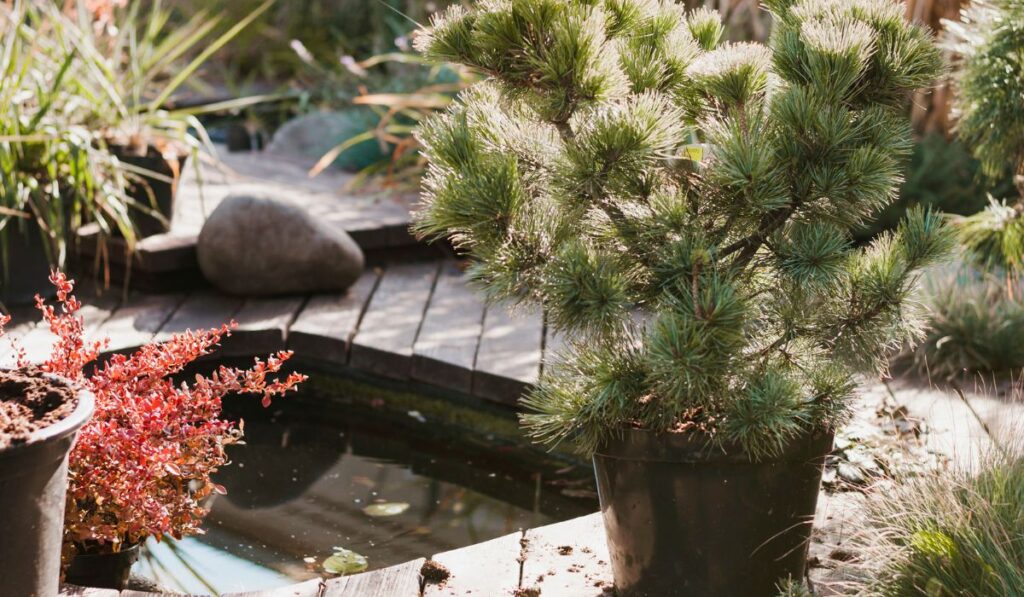
In the world of landscaping, evergreens are akin to the steadfast friends who stand by you year-round, irrespective of the season. They provide a constant splash of color when the rest of your garden has succumbed to the winter chill.
At DK Landscaping, we understand that choosing the right evergreens is crucial to ensuring your garden remains vibrant and dynamic throughout the year. Here’s a comprehensive guide to help you with your evergreen landscaping projects.
Understand Your Landscape’s Needs
Before diving into the plethora of evergreen landscaping options, it’s essential to assess the specific needs of your landscape. Consider the following:
- Climate Zone: Evergreens vary in their hardiness. Ensure the species you choose can thrive in your area’s climate.
- Soil Type: The success of an evergreen largely depends on the soil it’s planted in. Know your soil type and choose plants that will flourish in those conditions.
- Space and Size: Account for the mature size of the evergreen to ensure it fits well in your space without overcrowding.
- Sunlight: Some evergreens prefer full sun, while others thrive in partial shade. Understand the sunlight patterns in your landscape to make an informed choice.
Types of Evergreens
Evergreens come in various forms – trees, shrubs, and groundcovers. Each brings its unique aesthetic and functional qualities to your landscape.
Evergreen Trees
- Spruce (Picea spp.): With their classic Christmas tree shape, spruces are a popular choice. They offer dense foliage and can act as excellent windbreaks or privacy screens.
- Pine (Pinus spp.): Pines are known for their long, slender needles and are often used for their fast growth and stately appearance.
- Cedar (Cedrus spp.): Cedars are valued for their distinctive, often aromatic wood and rugged, shaggy appearance, adding a rustic charm to the landscape.
Evergreen Shrubs
- Boxwood (Buxus spp.): Boxwoods are versatile shrubs, perfect for creating hedges or topiaries. They’re known for their dense, bright green foliage and ease of maintenance.
- Rhododendron (Rhododendron spp.): Besides evergreen foliage, rhododendrons offer spectacular blooms, adding a splash of color to your garden in the spring.
- Holly (Ilex spp.): With their glossy leaves and bright red berries, hollies are both beautiful and great for attracting wildlife.
Evergreen Groundcovers
- Juniper (Juniperus spp.): Junipers are low-maintenance groundcovers that provide excellent erosion control on slopes and add texture to the landscape.
- Creeping Phlox (Phlox subulata): While not evergreen in the traditional sense, creeping phlox offers early spring flowers and retains its needle-like leaves year-round.
- Pachysandra (Pachysandra terminalis): This groundcover thrives in shaded areas where other plants struggle, providing a lush, green carpet.
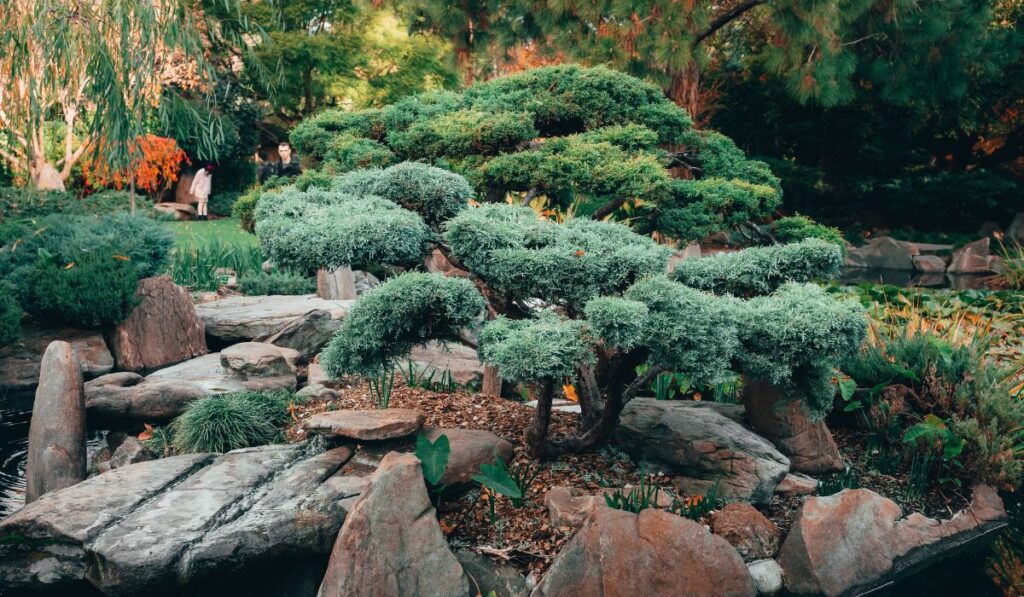
Aesthetic Considerations
Evergreens are not just about green. They come in a spectrum of colors – from the blue-green hues of the blue spruce to the golden tips of the ‘Sunshine’ ligustrum. The texture of the foliage can also vary greatly, from the soft, feathery fronds of a fern pine to the rigid, needle-like leaves of a holly.
When selecting evergreens, consider how their color, texture, and form will complement your existing landscape. Think about how they will look during different seasons and at various times of the day.
Practical Considerations
Beyond aesthetics, evergreens serve practical purposes in a landscape:
- Privacy: Tall evergreens like arborvitae or clumping bamboo can create a natural privacy screen.
- Windbreaks: Dense evergreens can protect your home and garden from harsh winds.
- Sound Barrier: The thick foliage of evergreens can help reduce noise pollution.
- Wildlife Habitat: Many evergreens provide shelter and food for birds and other wildlife.
Evergreen Maintenance and Care
While evergreens are generally low-maintenance, they do require some care:
- Watering: Newly planted evergreens need regular watering until they’re established. Even drought-tolerant varieties may need extra water during prolonged dry spells.
- Pruning: While most evergreens require little pruning, some may benefit from occasional trimming to maintain shape and health.
- Pest and Disease Management: Be vigilant about pests and diseases. Early detection and treatment can prevent serious damage.
Making the Choice is Ultimately Up to You
When choosing evergreens for your landscape, it’s not just about picking a plant; it’s about creating an ambiance, fulfilling practical needs, and ensuring the overall health and beauty of your garden. At DK Landscaping, we believe that with the right knowledge and a thoughtful approach, you can transform your landscape into a year-round haven of tranquility and beauty.
For More Evergreen Landscaping Ideas, Contact DK Landscaping
Selecting the right evergreens is a nuanced process that involves understanding your landscape’s specific needs, the unique characteristics of different evergreens, and how they fit into the broader aesthetic and practical context of your garden. With careful consideration and a strategic approach, you can ensure that your landscape remains vibrant and dynamic throughout the year, offering a serene and inviting outdoor space that reflects your personal style and meets your practical needs.
Remember, your landscape is a living, evolving canvas, and the evergreens you choose are the strokes that define its character and beauty across seasons. Contact DK Landscaping now for help with your evergreen landscaping projects!
Tree Maintenance – Get Trees Maintained To Ensure Safety
Are you a garden enthusiast who has incorporated several trees within your landscape? Or maybe your home is located near wooded surroundings where trees are a prominent feature? Well if so it may probably be time for you to get started with tree maintenance.
Even though most people don’t like the hassle of carrying out tree maintenance this practice is considered to be extremely essential as it serves to eliminate the threat of damage to property or serious injury come winter.
Tree Maintenance Is A Great Way To Manage Tree Overgrowth
 Despite all the great benefits that having trees in our surroundings provide, they can sometimes grow menacingly out of control. Some may grow tall reaching unbelievable heights while some can spread widely with huge amounts of foliage but regardless of the form of growth they possess they will most likely be a challenging task to manage.
Despite all the great benefits that having trees in our surroundings provide, they can sometimes grow menacingly out of control. Some may grow tall reaching unbelievable heights while some can spread widely with huge amounts of foliage but regardless of the form of growth they possess they will most likely be a challenging task to manage.
This can not only present several challenges but some dangers as well. So to properly manage this issue pruning, topping, shaping or sometimes even removing trees are great ways in which people can maintain and keep control of trees in their area.
Tree Maintenance Provides Additional Security
Despite the fact that trees help to beautify and improve our surroundings their maintenance is essential to the security of homes and businesses. You see when trees grow out of control they tend to accumulate bushes and overgrowth making it easy for an intruder to conceal themselves.
So maintaining trees and keeping them well groomed and at an appropriate height can serve to keep homes and businesses safe while offering clean, unobstructed, surroundings.
Need Help Getting Your Trees Maintained Before Winter? Let DK Landscaping Inc. Give You A Hand!
With winter just around the corner getting trees in your surroundings maintained is something you should not hesitate to do especially since weather can get a bit extreme during this time. Well here at DK Landscaping we’re aware of the resources and effort
required to maintain trees which is why we’d be happy to come in and give you a hand with any tree maintenance you need performed.
Here at DK Landscaping we like to say that “We like Jungles” as no job is too big or too small for us and we aim to provide the highest quality landscape and gardening services to all clients. Our tree maintenance services are very affordable and we work with clients to manage any type of surroundings. Give us a call at: (707) 280-3632 or visit our website:dklandscaping.com for more information.
Tips to Get Gardens Ready for Winter
With the year slowly coming to an end and winter quickly approaching the outdoors can turn into a dull and inhospitable place forcing most people to remain indoors however, for garden and landscape enthusiast alike this time of year is the ideal time to prep gardens, lawns and surrounding landscapes for the upcoming growing season.
Keep Gardens in Shape During Winter
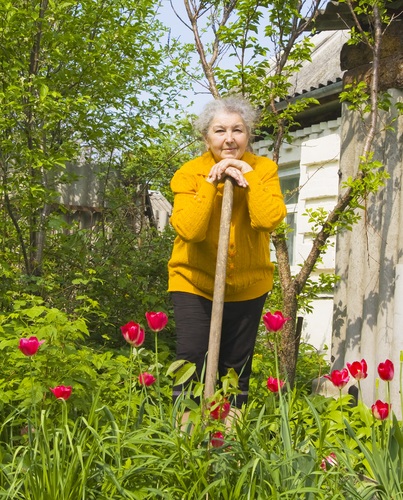
In the fall or just before winter most trees lose their foliage however at this time maintenance practices like pruning or trimming are encouraged during the latter months of the year as during this time of dormancy the majority of hedges, shrubs and trees can be pruned or trimmed without causing damage to the plant or tree.
This practice not only eliminates dead cumbersome branches from trees and plants but it also helps to improve their growth and shape while maintaining the general health of gardens.
As for the multitude of leaves that constantly fall and cover gardens at this time of year making it a practice to regularly clean gardens is extremely important as it allows garden beds and lawns to receive adequate sunlight which helps to promote optimal growth and health.
Another very important factor that gardeners should consider when preparing gardens for winter is the protection of plants from potential damage or destruction. Given the extreme conditions that come along with winter one clever tip that has proven to be an effective approach for protecting gardens during this extreme period is mulching.
Mainly used to help soil to retain moisture, regulate soil temperature and suppress weed growth mulching is also a great way to shield and protect plants against the hostile conditions of winter. Planting beds should be mulched at a depth of 1.5 – 2 inches to ensure plant roots remain the right temperature as well as to offer the right amount of protection from any potential damage.
Contract a Professional Landscaping Service
Not everyone may have the equipment to carry out trimming and pruning effectively and as for large, dead, trees and decayed branches hanging around gardens it’s best to contract trained professionals to manage tasks such as these since decayed trees and branches can pose serious threats of injury. Therefore contracting a professional landscaping service to manage tasks that might require equipment and trained personnel is the safest option.
Need Help with Preparing Your Garden for Winter?
Here at DK Landscaping Inc. we understand how tedious it can be to manage gardens on your own however we like to say that “We like Jungles” and we’d be happy to come in and assist you with all your garden preparations for winter.
We aim to provide the highest quality landscaping and gardening services to all clients. Our services are very affordable and we work with clients to manage any type of surroundings. Give us a call at: 707 217-6508 or visit our website: dklandscaping.com for more information.
Landscape Maintenance – Just Right this Thanksgiving
Thanksgiving is just around the corner and its time to get your home spruced up to meet all the guest that will be visiting during this wonderful time of year. In all the excitement and all the things to do, you should never forget your landscape maintenance. Why you might ask? Well its your landscape that meets the eye of your guest first and you want them to enjoy every inch of your surroundings, so you better get started right now!
Whether its the pesky mother-in-law or the who’s of who that you’re trying to impress, don’t hesitate to get your lawn in shape by hiring the experts in lawn care and maintenance. Now here’s the deal. If you’re sure you want to get all things in shape for your thanksgiving home gathering then you’ll need to understand a few things first.
What Real and Professional Landscape Maintenance Involves

Not everybody knows how to treat a lawn and get it looking its best and here’s where we come in. You see a lustrous landscape will require some degree of attention and education. Now as seasons change so do maintenance techniques and in the fall best practices include:
- Watering and Mowing
- Soil Aeration
- Fertilizing during Fall
- Filling in Bald Spots
- Weed Control
Its very important that you continue to water and mow your lawn, as needed, throughout the fall. Secondly expert lawn care providers will know that soil aeration is critical especially during fall. When this is done oxygen, water and fertilizer can easily reach the root of your grass.
The third important aspect of maintenance is the application of fertilizer during the fall. This action delivers essential nutrients which gives your grass the ability to grow deep roots now and also keep nutrients in the tank until next spring season. The filling of the bald patches is next on the list at number four and we use a special lawn repair mixture that will give the garden a full body and a great look that will make your neighbors die for.
Last but not least is weed control and most herbicide manufacturers recommend applying the weed killer during early-to-mid autumn. Apply this now and your garden will be weed free even next spring.
There’s no doubt that we can give you all the assistance and lawn care advice needed. Contact us if you want to enjoy the benefits of our expert advice and reap the rewards of real landscape maintenance.
Fall into These Horticulture Habits for Winter
Shuttering your garden for the fall is easier than you might think. You probably already know to clean up any debris and uproot weeds that love nothing more than to spread, but there are a few more horticulture steps that can really put you on the right path for a renewal in spring and bounteous summer harvest.
Get Your Garden Cleaned Up
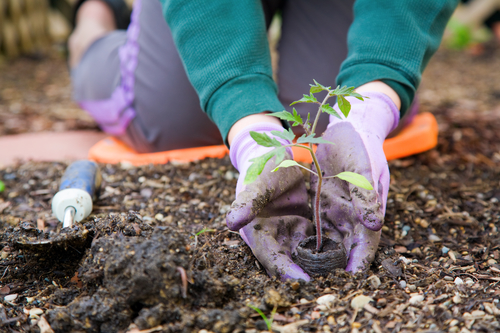
It might be tempting to dust off your knees, climb out of your garden, and let nature take its chilly winter course. The thing to realize is that while that might be easier now, you could be setting yourself up for more work later. Prepping your soil – and perhaps planting a cover crop – and replenishing your mulch can make life so much easier in early spring next year.
You want to remove any weeds you find or decayed plants before your ground gets too cold. A professional landscaping company can help you remove weeds, prune perennials, and even turn your fall leaves into mulch and compost that nourishes your soil year round.
If you’re really strapped for time, though, and you don’t want weeds to grow then put plastic or cardboard over existing weeds and leave that cover on through the winter to keep weeds from spreading. Or call on DK Landscaping and get landscaping experts to clean up your garden in time for winter.
Making a light pass of your garden with a tiller can also clear your garden of insects that plan on overwintering (spending the winter) in your soil. Insects like grubs and beetles want to hunker down and spend the winter in your soil, but these same insects can ruin your plants and screw up your soil!
A Horticulture Essential: Prepping Your Soil for Winter
The plants in your garden are actually more complex than they might look at first glance. When your garden’s soil doesn’t have the nutrients that your plants need to grow to their full potential, they emit stress hormones that can make it easier for nearby insects or diseases to take hold of your garden. That’s obviously not what you want.
Late fall might actually be the best time of the year to call on a company like DK Landscaping to test your soil to make sure that it contains the right kind of nutrients to promote plant growth. DK’s horticulture experts will look to see how much organic matter is in your soil, gauge the level of mineral nutrients in your soil that your plant roots can absorb, and measure levels of potassium and phosphorous.
(Nitrogen, phosphorous, and potassium are your soil’s three main macronutrients. Potassium helps for water retention in your garden and nitrogen and phosphorous ensure that you get early growth and healthy roots.)
That might sound really complicated, but a simple test can tell you a whole lot. Something as simple as adding lime to your soil can help bring your soil’s pH into balance too. Adding lime is also really good to do in late fall because it takes a while for the soil to absorb it. Time is your friend in the winter months when your garden is basically laying fallow.
Leaves are Solid Gold for Your Garden
Once you’ve tested your soil, you’re going to want to apply some kind of mulch (goes on top of soil) or compost (goes into soil). Chopped-up leaves sprinkled over your garden will enrich your soil, improve water retention, and stop weeds dead in their tracks.
DK Landscaping can handle more complex horticulture and help you with regular garden maintenance, irrigation, and general landscaping in fall and throughout the year.
Flood-Resistant Yard Maintenance Tips For the Rainy Season
Mother Nature can be unpredictable. And if you live in Rohnert Park, your home could be part of 4,813 properties with a 26% risk of flooding. Water rushing through your yard, threatening to wash away all your hard work, and turning your lush oasis into a waterlogged nightmare, becomes a significant concern.
While there’s not much you can do to control the weather, there are steps you can take to ensure your yard is as flood-resistant as possible. Here are practical strategies to fortify your yard against floods, protect your precious plants, maintain proper drainage, and prevent erosion to keep your outdoor space looking its best, even when the water starts rising.

Choose Flood-Resistant Plants for Your Yard
Flood-resistant plants possess unique characteristics that allow them to withstand and thrive in waterlogged conditions, ensuring the resilience of your outdoor space during heavy rainfall or flooding events. Here’s how it works:
- Enhanced drainage: Water-loving grasses like blue grama, willows, cypress, and shrubs like elderberry have well-developed root systems that improve soil structure and drainage. Their extensive root networks act like natural sponges, absorbing excess water and preventing it from pooling on the surface. This reduces water accumulating in your yard, eliminating the potential for flooding.
- Erosion control: Heavy rainfall erodes soil, washing it away, which causes damage to your yard and nearby areas. Plants with deep and fibrous root systems help anchor the soil, preventing erosion while maintaining the integrity of your landscape.
- Water filtration and nutrient retention: Flood-resistant plant root systems act as natural filters, removing pollutants and sediment before the water reaches groundwater sources or nearby water bodies. These plants also absorb excess nutrients, like nitrogen and phosphorus, commonly found in stormwater runoff, effectively preventing water pollution.
When picking vegetation for your yard, opt for species native to Califonia, like buffalo grass. They have evolved and adapted to thrive in the local climate, soil conditions, and rainfall patterns, making them inherently more resilient to natural disasters.
Incorporating native flood-resistant plants further aligns your yard with the surrounding ecosystem, promoting biodiversity. Take advantage of online tools to help you find the most appropriate native species for your specific region in California.
Better Your Drainage System
A qualified yard maintenance rohnert park landscaper can help you improve how water moves and drains within your yard, effectively mitigating the risk of flooding and minimizing potential damage. Landscaping strategies to improve yard drainage include:
- Grading and contouring: Proper grading and contouring direct water towards suitable drainage outlets, such as swales or storm drains. The land should slope away from the center of the yard, guiding water to flow away from vulnerable areas. A skilled landscaper will evaluate the topography, re-level any spots where water pools, and make adjustments to ensure optimal drainage paths.
- Install French drains or catch basins: French drains and catch basins are effective drainage solutions that divert excess water from your yard. French drains consist of perforated pipes covered by gravel, facilitating water absorption. Catch basins, on the other hand, are underground structures that collect surface water and direct it to a suitable outlet. A professional can strategically install these drainage features in areas prone to flooding, preventing water from accumulating and causing damage.
- Gutter and downspout maintenance: Properly functioning gutters and downspouts are vital for effective drainage. A landscaper inspects and cleans your gutters regularly, freeing them from debris that causes blockages. Consider installing downspout extensions to direct water into proper drainage channels, preventing water from running into the yard.
- Rain gardens and bioswales: Rain gardens and bioswales are innovative landscaping techniques that improve drainage while enhancing your yard’s aesthetics. Rain gardens are shallow depressions filled with water-tolerant plants that can absorb and filter water. Bioswales are channels designed to collect and divert water, allowing it to infiltrate the ground gradually. Both features contribute to efficient water management, reducing the risk of flooding.
- Permeable paving: Replace impermeable surfaces, such as concrete or asphalt, with permeable alternatives like gravel, permeable pavers, or porous asphalt. These materials allow water to infiltrate the ground instead of pooling on the surface. Permeable paving also aids in drainage but also helps recharge groundwater resources.
- Add rain barrels: During heavy rains, the barrels capture and store stormwater that would otherwise flow into your yard, contributing to localized flooding. These innovative solutions save water, reduce water bills, promote sustainable gardening, and benefit soil and plant health.
Apply Hardwood Mulch
When applied as a protective layer on the soil surface, hardwood mulch acts as a barrier, preventing rainwater from directly impacting the soil and grass. Instead, water penetrates the soil gradually, promoting better infiltration and reducing runoff.
By improving soil structure, hardwood mulch helps create a more porous and well-drained soil, increasing the yard’s capacity to absorb and retain water during heavy rains. Hardwood mulch is preferred as it lasts longer and resists floating away better than lighter mulches.
Find a Qualified Yard Maintenance Rohnert Park Landscaper
From selecting water-loving plants to improving drainage systems, taking proactive measures is key to creating a flood-resistant yard. To guarantee the best results, seek the assistance of a qualified, credible, and licensed landscaping company. Take action today and partner with professionals to transform your yard into a beautiful, resilient haven that stands strong against the forces of nature.
Get the Best Bushes for Your Low-maintenance Garden
If you’re a busy homeowner, chances are you don’t want to add gardening chores to your overflowing plate. But you can turn your yard into a beautiful landscape bursting with color and life.
Proper planning allows you to create a stunning low-maintenance garden with colorful and evergreen bushes. These are hardy, slow-growing shrubs that require minimum pruning, saving you the hassle of frequent pruning.
Dig in and learn more about the best shrubs for your low-maintenance garden.

How to Choose the Best Shrubs for Your Home
The key to creating a low-maintenance garden is filling it with shrubbery that never grows out of control or requires constant pruning. It allows for a rewarding gardening experience that doesn’t saddle you with recurring chores.
1. Sunlight
The amount of direct sunlight your yard receives affects the growth vigor. Ideally, plants require at least six hours of direct sunlight to thrive. However, you can still create a lush and colorful yard with beautiful blooms and fabulous foliage if your yard receives 3 to 6 hours of direct sunlight. Insufficient sunlight can lead to stunted growth and weak stems and give your bushes a drab appearance.
Observe your yard on a sunny day and note the light and shade pattern. Creating a detailed light map paints an accurate picture of how much light your yard receives to help you create the perfect garden.
2. Rooting System
Root size is a priority consideration if your garden is near your house. Shrubs with extensive roots can damage your home’s foundation, sidewalk, driveway, or septic system, saddling you with expensive repairs. Shallow roots shrubs such as hydrangea, forsythia, camellia, rhododendron, plantain lilies, and boxwoods are ideal for such gardens.
3. Sunlight Preferences
It may come as a surprise, but shrubs have varying sunlight requirements. Some shrubs thrive in full sun, while others prefer partial or deep shades. Understanding sunlight preferences is crucial to planning your landscape. You can match them with the ideal location to ensure growth and survival and create a blooming garden.
4. Size
Paying attention to the height and spread of your preferred shrubbery helps eliminates landscaping problems. Shrubs fall into three broad categories—small, medium, and large.
- Small shrubs are under 3 feet tall with a spread of 1 to 4 feet.
- Medium shrubs are under 6 feet tall and spread 3 to 6 feet.
- Large shrubs grow up to 20 feet tall with a spread of 6 to 15 feet.
The Best Low Maintenance Bushes for Your Yard
These shrubs will help you create a beautiful, low-effort garden without saddling you with routine gardening chores.
Dwarf Alberta Spruce
Dwarf Alberta Spruce is a compact, evergreen shrub with a distinct pyramidal shape. The leaves are bright, green aromatic needles and are densely packed, giving the dwarf tree a tight, fuzzy look. Dwarf Albert spruce rarely grows above 13 feet and has an astonishingly slow growth rate. It only grows 2 to 4 inches yearly, so it rarely requires pruning and will probably never outgrow its designated space. It thrives in well-drained acidic soils and direct sunlight.
Knock Out Rose
Knock Out Rose is a hard flowering shrub renowned for its beautiful continuous blooms during the growing season. It showcases vibrant flowers in red, pink, and yellow colors. Despite belonging to the rose family, Knock Out Rose is notoriously easy to grow. It’s resistant to pests and diseases and self-cleans—sheds its spent flowers without requiring deadheading. It can grow up to 7 feet tall, thrives in well-drained soils, and requires at least six hours of sunlight daily.
Blue Star Juniper
Blue Star Juniper is a compact slow-growing evergreen shrub with dense, silver-blue foliage. Mature shrubbery is about 3 feet tall with a spread of about 3 feet. They feature awl-shaped needle-like leaves arranged in clusters on tiny stems resembling stars. The unique shape of these slow-growing shrubs adds beauty and appeal to any landscape. Blue Star Juniper is exceptionally hardy, requires little maintenance, and thrives in various soil conditions.
Boxwood
Boxwoods are hardy, evergreen shrubs renowned for their dense foliage, compact growth habit, and landscaping versatility. The growth height depends on the specific variety and pruning style but typically ranges from 1 to 15 feet. Dwarf cultivars tend to stay compact, growing to a maximum height of about 2 feet. Boxwood bushes are slow growing, usually about 12 inches a year, and have spread ranges from 1 to 10 feet. They produce tiny white blooms in spring, thrive in well-drained soils, and grow best in partial or full sun.
Rhododendron
Rhododendrons are a diverse group of shrubs renowned for their showy, colorful flowers. Their growth height depends on the variety and cultivar. Compact and dwarf cultivars are 1 to 3 feet tall, while large rhododendrons are usually 6 to 15 feet tall. Compact shrubs may have a spread of 2 to 4 feet, while large ones can have a spread of 6 to 10 feet. Rhododendrons thrive in coarse, acidic soils and require partial sun exposure.
Create a Thriving Low Maintenance Garden
Shrubs are ideal an ideal choice if looking to create a beautiful, low-maintenance garden. Carefully choosing the shrub varieties can help pepper your landscape with a mix of evergreen and flowering shrubs. Working with an expert service can help you make the best choices and transform your drab yard into a beautiful paradise teeming with life.
Get the best low-maintenance bushes for your garden. Contact us today!
Pro Tips For Sustainable Yard Maintenance
A well-maintained, healthy, and vibrant yard is a joy to look at and a pleasure to enjoy. It boosts curb appeal, increases property value, and contributes to community pride. If you’re looking for the best ways to maintain a beautiful yard without wasting resources or harming the environment, then it’s time to start thinking sustainably.
By implementing sustainable yard maintenance practices, you can save water, money and protect the environment from ecological damage. Whether you’re a developer looking to uphold the value of your properties or a homeowner seeking to create the perfect entertaining spot, these pro tips will help you take care of your yard in a responsible way:

Design a Water-Wise Landscape
Water scarcity is an increasing problem in parts of the world, with over two-thirds of the world’s population experiencing severe water scarcity for at least one month each year. This is why we must consider sustainable ways to keep your yard lush year-round.
You can conserve water used to maintain your yard by:
- Reducing and reusing water
- Increasing surface coverage
- Investing in an efficient irrigation system
- Choosing drought-resistant plants
- Incorporating rainwater harvesting systems
But before you start, it’s important to create a plan that takes into account the type of soil, climate, and region you live in. Here’s where a landscape design professional specializing in creating beautiful, water-saving yards comes in.
An experienced yard maintenance Rohnert Park landscaper will consider the Sonoma-Marin Saving Water Partnership design standards to create a sustainable and water-wise landscape that enhances the beauty of your outdoor space.
Practice Regular Yard Maintenance
If you want a yard that looks picture-perfect all the time, then regular maintenance is essential. You don’t have to invest a ton of money – there are sustainable ways to make sure your yard is thriving:
Mowing Your Lawn
Regularly mowed grass will stay healthier than grass allowed to overgrow and go weeks between mowings. Sustainable yard maintenance means ensuring your blade is sharp and not cutting off more than 1/3 of the grass blade at any given time.
Edging Your Yard
Have you ever noticed how professional landscapers make those crisp borders between the lawn and surrounding beds? That’s because they’re adept at using sophisticated edging tools for precision work around gardens, pathways, and driveways to give the yard distinction between different landscape design elements.
Pruning & Weeding Your Yard
Regular pruning removes dead or diseased branches to promote the healthy growth of flowering plants and vegetation in your garden. As far as weeds go – those pesky little buggers can sprout up even after you think you’ve gotten rid of them! To prevent weeds from regrowing and keep plants looking their best all season long, consider hiring a landscaping company with access to sustainable weed control methods like mulching.
Mulch It Up
Mulching can help reduce water loss due to evaporation and keep weeds from growing in between plants, which helps prevent competition for resources like water and nutrients from the soil. Top off your mulch every few months since it naturally degrades over time.
Choose Eco-Friendly Products
What you use to treat your plants and lawns can make a huge difference in the eco-friendliness of your yard maintenance routine. Whether it’s weed killer, fertilizer, or bug spray, you should always check the ingredients and assess their environmental impact.
Here are some pro tips for eco-friendly yard maintenance:
- Opt for organic fertilizers that contain composted organic materials such as plant residues, vegetable matter, and manure instead of synthetic fertilizers.
- Try using natural pest control techniques such as installing bird baths to attract predatory birds that eat harmful insects, companion planting (growing certain plants together to ward off pests), and using sticky traps instead of chemical pesticides.
- Request the landscaper to use slow-release fertilizers with fewer synthetic chemicals and minimally toxic herbicides instead of traditional products filled with harsh chemicals, which damage the environment in the long run.
Repair and Replace When Necessary
Sometimes, despite our best efforts, certain things in your yard just won’t last. Whether it’s a badly rusted sprinkler head or dying shrubs and trees, it pays to be proactive and invest in repairs or replacements.
The first thing to do is to diagnose the problem. You can do this by evaluating the structure’s condition by checking for signs of decay, metal rust, holes, and gaps in the grass. It’s best to have an expert provide an assessment.
Once you have a professional evaluation, you can decide whether to repair or replace the structure. If the system is relatively new, a repair is advisable. But if the design is over a few years old, you may need to replace it with an updated, much more durable model.
Find Yard Maintenance Services
Pursuing sustainable yard maintenance is easy with the right tips and tricks. Utilizing tools such as water-saving irrigation systems, native plants, and organic fertilizers is key for any Rohnert Park homeowner looking to maintain a beautiful and sustainable outdoor environment.
We provide small-scale and large-scale yard maintenance services focusing on sustainability and efficiency. We understand the importance of using eco-friendly practices while keeping your landscape looking beautiful and healthy year-round! Contact us today for more information about our sustainable yard maintenance services!


